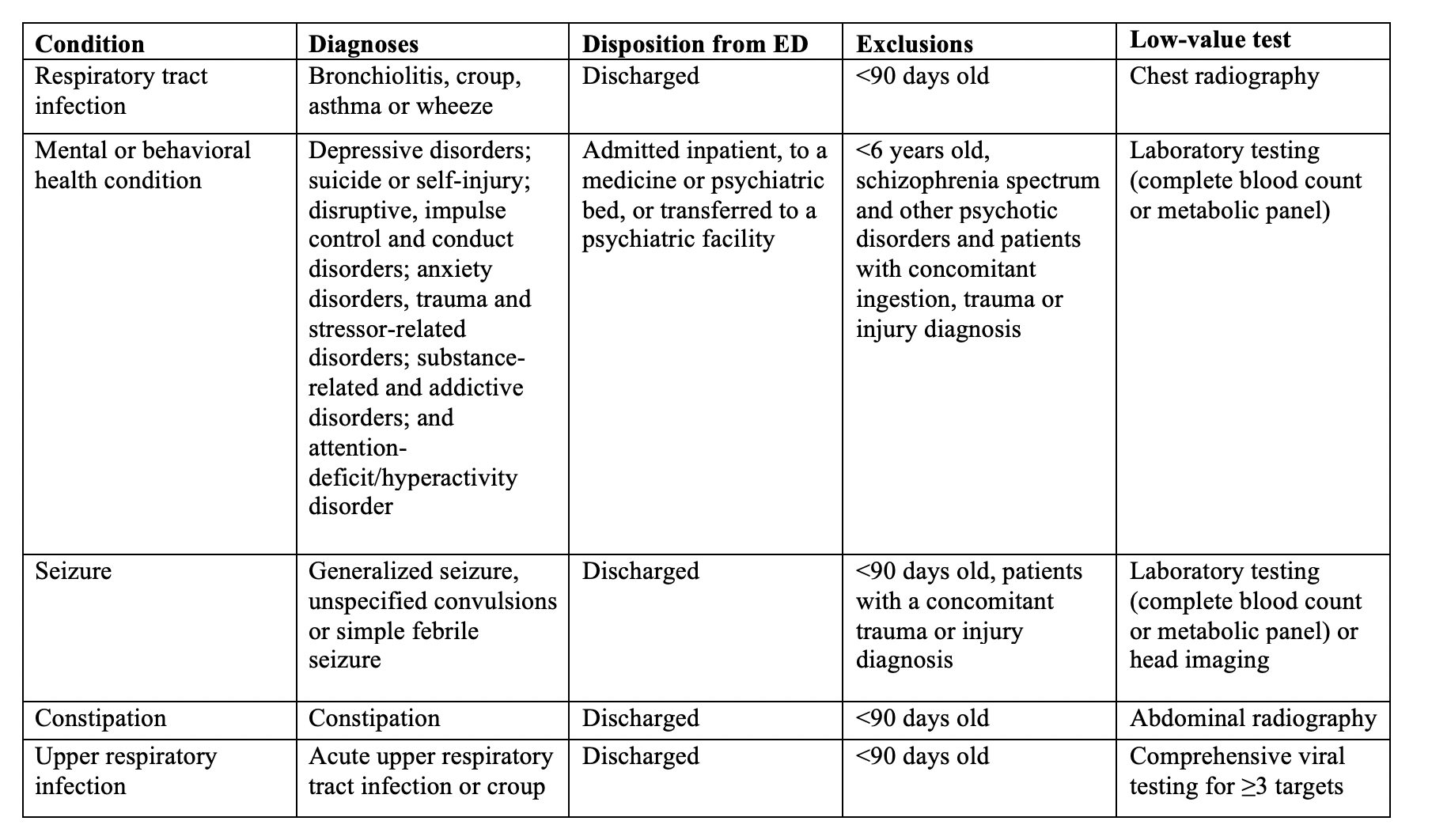Emergency Medicine 8
Session: Emergency Medicine 8
107 - Adherence to ‘Choosing Wisely’ Recommendations in Pediatric Emergency Medicine
Sunday, April 27, 2025
8:30am - 10:45am HST
Publication Number: 107.3592
Tara Corcoran, Ann & Robert H. Lurie Children's Hospital of Chicago, Chicago, IL, United States; Sriram Ramgopal, Ann & Robert H. Lurie Children's Hospital of Chicago, Oak Park, IL, United States; Jennifer Hoffmann, Northwestern University, Ann & Robert H. Lurie Children's Hospital of Chicago, Chicago, IL, United States; Kenneth Michelson, Lurie Children's Hospital, Chicago, IL, United States

Tara Funk Corcoran, MD (she/her/hers)
Fellow Physician
Ann & Robert H. Lurie Children's Hospital of Chicago
Chicago, Illinois, United States
Presenting Author(s)
Background: In 2022, Choosing Wisely released recommendations to decrease the frequency of low-value testing in pediatric emergency medicine. The extent to which low-value testing occurs in US emergency departments (EDs) is unclear but may vary by ED experience.
Objective: We compared the frequency of low-value testing by ED volume and examined trends in low-value testing.
Design/Methods: We conducted a cross-sectional study using data from the Healthcare Cost and Utilization Project in all EDs in eight states. We included children under 18 years old with one of the diagnoses addressed by the Choosing Wisely guidelines: respiratory tract illness (RTI), mental or behavioral health condition, seizure, constipation, or upper respiratory infection (URI) (Table 1). Our exposure was ED volume, defined using National Pediatric Readiness Program categories of pediatric visits per year: < 1,800 (low); 1,800-4,999 (low-medium); 5,000-9,999 (medium); or ≥10,000 (high) with an outcome of low-value testing. Low-value tests were determined using procedure codes. We evaluated the adjusted association of volume with low-value testing using logistic regression with clustering by site.
Results: We analyzed 5.2 million visits. Low-value tests were obtained in 20.4% of overall encounters; 31.3 % RTI, 17.0% mental or behavioral health condition, 43.1% seizure, 66.1% constipation and 2.6% URI. Low-value tests were obtained in 12.7% of visits to low-volume EDs, 21.9% for low-medium-volume EDs, 24.9% for medium-volume EDs, and 19.6% for high-volume EDs. The relationship of volume and testing differed by condition (Table 2). Low-volume sites had the lowest rates of testing for mental or behavioral health conditions, constipation, and URI. High volume sites had the lowest rates of testing for RTI and seizure. There was no consistent ordinal trend. Low-value testing increased 4.3% per year (95% CI 2.5, 6.1), driven by increased comprehensive viral testing in URIs (Figure 1).
Conclusion(s): Low-value testing occurred in one fifth of ED visits for children with RTI, mental and behavioral health conditions, seizure, constipation and URI. The relationship of ED volume to low-value testing was inconsistent across conditions. Education and quality improvement measures are needed in all hospital types in order to reduce low-value testing.
Table 1
 Inclusion and exclusion criteria for each studied condition
Inclusion and exclusion criteria for each studied conditionTable 2
.png) Low-value testing by condition, test, and hospital pediatric volume
Low-value testing by condition, test, and hospital pediatric volumeFigure 1
.png) Longitudinal trends for low-value testing by condition
Longitudinal trends for low-value testing by conditionTable 1
 Inclusion and exclusion criteria for each studied condition
Inclusion and exclusion criteria for each studied conditionTable 2
.png) Low-value testing by condition, test, and hospital pediatric volume
Low-value testing by condition, test, and hospital pediatric volumeFigure 1
.png) Longitudinal trends for low-value testing by condition
Longitudinal trends for low-value testing by condition
